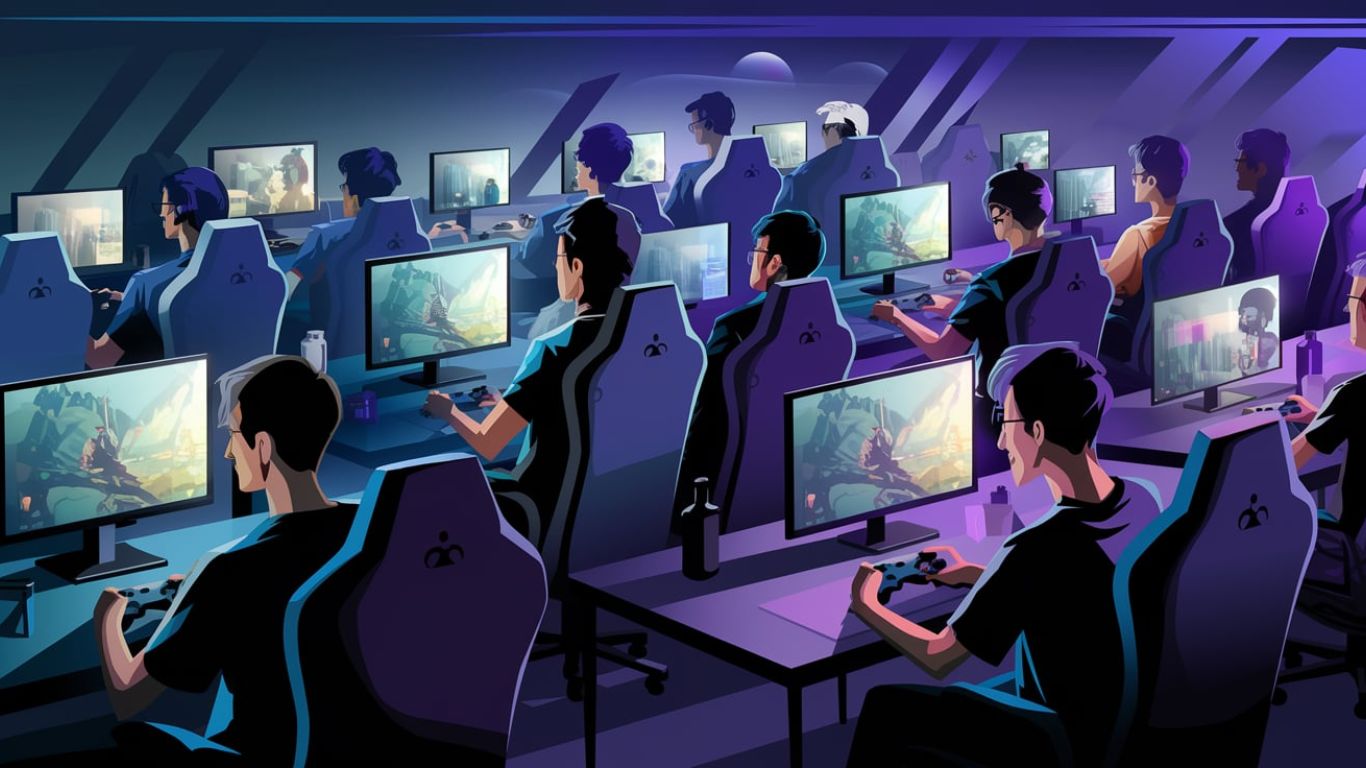
According to research, global gaming industry sales increased by 20% to $179.7 billion in 2020. This makes the videogame business more profitable than the international film and North American sports sectors combined. According to the Motion Picture Association, the worldwide film business earned $100 billion for the first time in 2019. While PwC predicted North American sports would make more than $75 billion in 2020.
1- Impact of Covid-19 on The Gaming Industry
However, both industries were hit hard by the COVID-19 pandemic in 2020. The gaming industry is anticipating a rise by double digits this year after two years of high single digits. There is promise in the recent introduction of next-generation gaming consoles from Sony Corp. 6758, -0.62 percent SNE, and Microsoft Corp. MSFT, -0.97 percent. There are also new games to get the most out of those upgrades. Experts predict that solid growth will continue in 2021, even as COVID-19 vaccines roll out.
2- Gaming is a Multiple Channels Industry
Because of the variety of ways to play games, the video game business has grown in recent years. Gone are the days of keeping track of system sales and games sold for their respective consoles and PCs. There is a rise in digital-copy game sales, mobile games, in-app purchase freemium games, and cross-platform games not specific to a console. There are streaming game services like Microsoft’s Game Pass, games-as-a-subscription models, and online distribution services like Steam. Along with varying levels of transparency, anyone trying to make apples-to-apples comparisons faces an unwieldy flurry of options.
While new versions of consoles will enhance sales, they aren’t the largest or fastest-growing market segment. Mobile gaming prediction is to grow the most, with China accounting for a significant portion of the income from smartphones and tablets. Global mobile gaming revenues predict an increase of 24% year over year to $87.7 billion, excluding in-game ad revenue.
It’s a matter of economics. Predictions of mobile game income are to grow even further in 2020, surpassing that of console and PC games. Dedicated gaming consoles such as Sony’s PlayStation 5, Microsoft’s new Xbox line, and Nintendo differ from it.
Mobile phones, which serve as the primary online connection for billions of people worldwide, can be cheap — or even free. According to IDC’s Ward, PC gamers are in the middle. This is because their games necessitate a multipurpose device that is more widespread than consoles but less frequent than smartphones.
3- The Gaming Industry Growth in China
China recently removed a ban on gaming consoles aiding in the popularity of mobile games. Only about 1% of the console market comes from China. In contrast, it is the biggest driver of mobile growth in Asia/Pacific. Revenue there expects to jump nearly 25% year over year to $56.6 billion.
Tencent Holdings Ltd and NetEase Inc control more than half of the mobile gaming market in China. Companies like Activision Blizzard Inc., ATVI, Zynga Inc. ZNGA, and Glu Mobile Inc. dominate the mobile gaming market outside China.
4- Impact of Mobile Platforms on The Gaming Industry
Mobile growth is excellent news for smartphone and tablet game distributors. Distributors such as Apple and Google parent Alphabet Inc control game distribution on iPhones and Android-based devices. They receive a significant cut of game income that flows via their app stores. In August, Apple and Google banned Epic Games, the publisher of the popular war game “Fortnite,” from their marketplaces. They were attempting to circumvent the taxes, the practice gained a lot of attention.
5- The Current Trends
Globally, gaming console revenue is seeing a rise. This includes hardware, all game software, and services are predicted to increase by 20% to $52.5 billion in 2023 compared to 2022. Global revenue prediction from digital PC and Mac sales is to increase by 11% year over year to $39.5 billion. Mobile and PC game revenues do not take hardware sales into account, unlike console gaming revenue.
PC gaming income would have been higher if not for the extensive shutdown of iCafes in China due to COVID-19. In China, Internet Cafes are a popular choice for PC gamers who want to rent top-of-the-line equipment and socialize face-to-face.
Legacy Gaming Platforms are also a hit and growing trend among players.
6- New Console Launches
New console releases primarily benefit consumers in the United States. According to figures from The NPD Group, there was an increase. The total video game spending in the United States increased 22% to $44.5 billion in the first 11 months of 2020. Hardware sales were seen to increase by 34% to roughly $4 billion. Software sales increased by 21% to $38.4 billion, and accessory sales grew by 22% to $2.1 billion.
In November, when Sony’s PlayStation 5 and Microsoft’s new Xbox line, were introduced, those advances were much more evident. According to NPD, in November hardware sales increased by 58 percent to $1.4 billion from a year ago. Software sales increased by 32 percent to $5.2 billion, and accessory sales increased by 8% to $314 million.
7- Existing Franchise’s Strong Performance
In 2020, shares of Activision Blizzard, Electronic Arts, and Take-Two Interactive Software had all outperformed the S&P 500 index. It saw shares of Activision Blizzard up 49 percent, Electronic Arts, and Take-Two Interactive Software up 64 percent.
Videogame analysts noticed that 79 percent of people surveyed said they had played video games in the past six months. Since COVID-19 was declared a pandemic in March there was a definite increase. There was an average of 14 hours of play per week. This is compared to an average of 12 hours per week a year ago, in a survey released this past summer.
Activision Blizzard’s “Call of Duty” is one of the best-placed franchises. They are paving the way for a variety of interaction methods. With its “Black Ops — Cold War” and “Modern Warfare” titles, “Call of Duty” is not only the usual console and PC channel. But it now offers a free-to-play “Warzone” battle royale option similar to “Fortnite,” all of which are available on mobile platforms.
Conclusion
Even though consumers generally expect to go back to pre-pandemic activities (e.g. travel, restaurants, movies, etc. Gaming might see a slight decline in organic growth in 2023. Strong performance will be driven by how core franchises execute pre-existing strategies.












